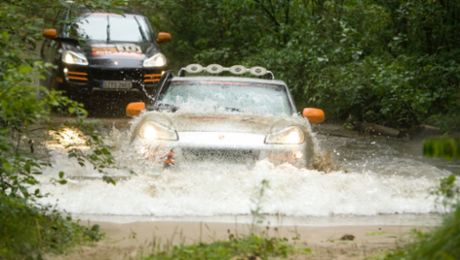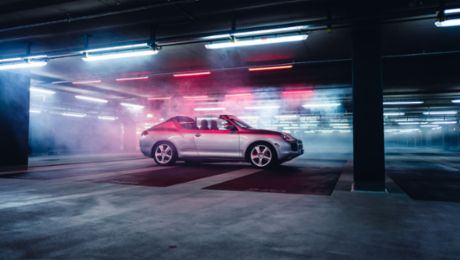This was the first time in the history of the company that, instead of a two-door sports car, a blueprint for an SUV was required. This was, in a way, the exact opposite of a sports car layout: a big, high-roofed car with four doors and room for five people and all their luggage. Additionally, the Cayenne needed much greater ground clearance than a classic sports car, as it was expected to count among the best when driving off-road as well. Internally, the Cayenne is known by the code letter E for Enduro, with the first Cayenne named E1 and the current model being the E3.
“Of course, it wasn’t at all easy to express the identity of the Porsche brand in a car that had absolutely nothing in common with the existing models made by our company,” said Lagaay after the work was done. The designer spent a whole year on the headlights alone. It wasn’t just that they had to incorporate the low and high beams and the cornering light while preserving the clear lines of the Cayenne body – these were among the components that guaranteed the brand identity.
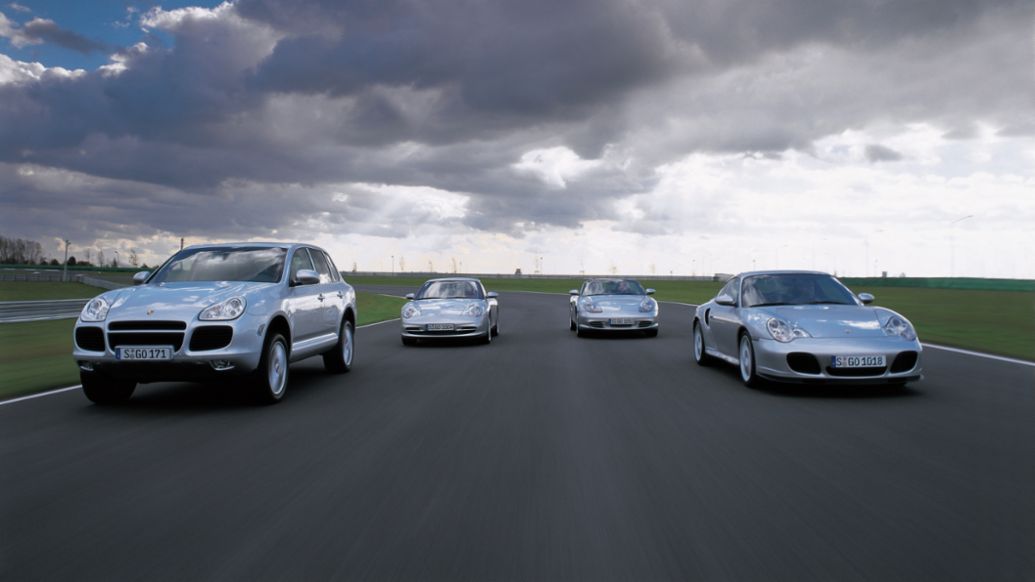
Even today, any car fan can recognise the face of the 996-generation Porsche 911 in the front end of the first Cayenne. This impression was reinforced by what is referred to as the topography of the front section. The highest point of the wings and the headlights is above that of the bonnet. This is a distinguishing feature for a Porsche, because these contours are a clear visual reference to the design of the iconic 911. However, it was significantly more difficult to realise this specific design in the Cayenne, with its big V8 engine under the bonnet.
The Porsche product became a brand
Another feature of the 911-style bonnet is its noticeable taper towards the front. The designers also wanted to adopt this for the Cayenne, but the engineers initially suggested a square engine bonnet. This would make it easier to access the air filter and the headlights. The designers prevailed on this point, but they also worked with the car’s engineering team on areas that were not visible. For example, they worked together to find an optimised arrangement of the air filter.
Michael Mauer was also pleased that Porsche was willing to invest so much in design and construction as part of the internally named "Colorado" development project. In 2004 he succeeded Harm Lagaay as head designer: “For me, the Cayenne is about a fundamental question. No matter which type of vehicle concept would have been used to enhance the 911 and Boxster sports car lines, the step to the third Porsche made a brand out of the product. And the design gave the car, the proportions of which take it as far away from the sports car as it is possible to go, a Porsche identity that transcends the brand name.”
This remains evident today in the distinctive shoulder at the back of the Cayenne E1 – in which Ferdinand Alexander Porsche played a significant design role – as well as the smooth surfaces of the body and the omission of a traditional radiator grille between the headlights. These classic Porsche characteristics also reduced the significance of the comparatively large air intakes in the front apron. A front-mounted engine requires air for combustion and cooling. And Porsche customers were already used to front air intakes from the sports cars. In this case, though, they are responsible for cooling the brakes.
The doors were the biggest design challenge
Mauer describes the side profile of the car as the most difficult design challenge. The Cayenne was created together with the Volkswagen Touareg, which is why the windscreens and all four doors of the two SUVs are identical. “It’s easy to underestimate how much the doors define the side of a car. Behind the rear door we’ve got maybe another metre, and only a little more at the front, so there is not a lot of room to do very much,” says Mauer, who first worked on the Porsche SUV when the E1 facelift appeared in 2007.
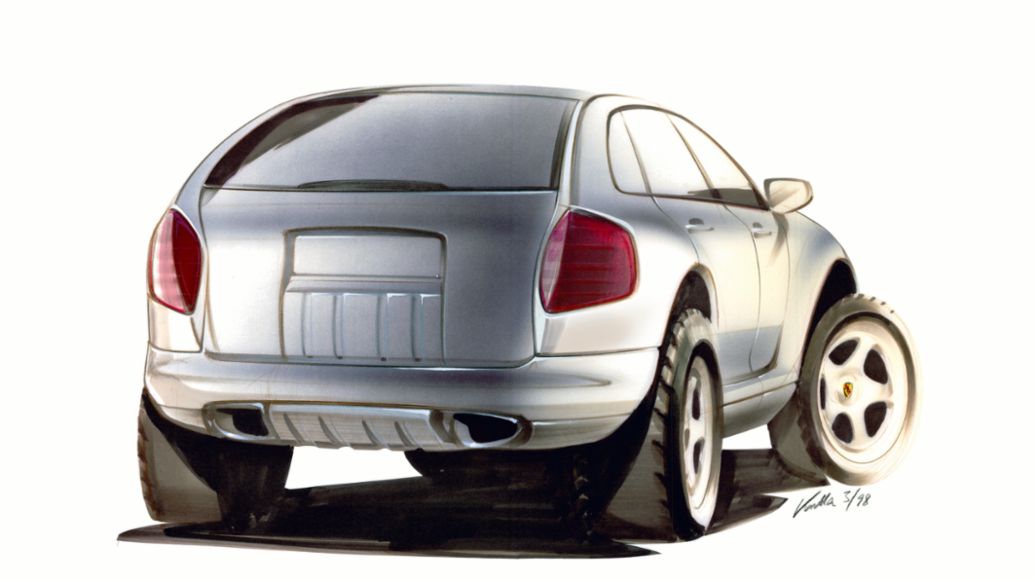
“With the E1 II, we gave the whole car more visual sharpness and definition,” he recalls. However, the door issue was still there, along with the difficulty of designing a fastback-style rear – one that would taper diagonally to the rear like a sports car. At Porsche, this is known as the ‘flyline’. However, if the doors cannot be changed to prevent the roof line from dropping, there is little space left at the rear to create a flyline that the customer recognises as a characteristic feature. The options that remained to solve this were a more sloping design of the rigid side windows behind the rear doors, and the addition of a spoiler to extend the roof line.
Compromises in the interior
Overall, even from today’s perspective, the first Cayenne with its formal clarity and emphasis on characteristic Porsche elements is a consistent member of the model range. The interior of the E1 was, however, strongly influenced by Volkswagen. “The interior can hardly deny its kinship with the Touareg,” says Markus Auerbach, Head of Interior Design Style at Porsche. Porsche made compromises, for example, on the brand’s customary five-tube design for the instrument cluster. While five interlinked rings can be seen in front of the steering wheel, the rev counter is not positioned in the middle as is usual for Porsche, but rather on the left.
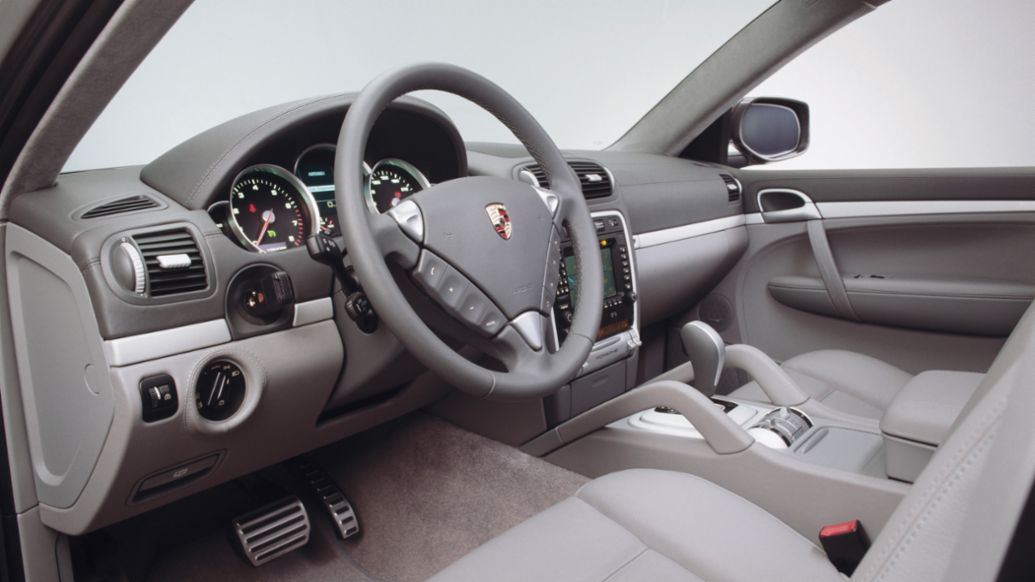
To obtain the usual Porsche arrangement, developing a new instrument cluster would have been necessary – an unplanned investment for the first-generation Cayenne. However, Porsche was still able to include a number of characteristic elements: its own three-spoke steering wheel, hand-grips on the centre console that underline the superb off-road performance of the SUV, and the ignition lock that can be found in the same place as in every Porsche – to the left of the steering wheel.
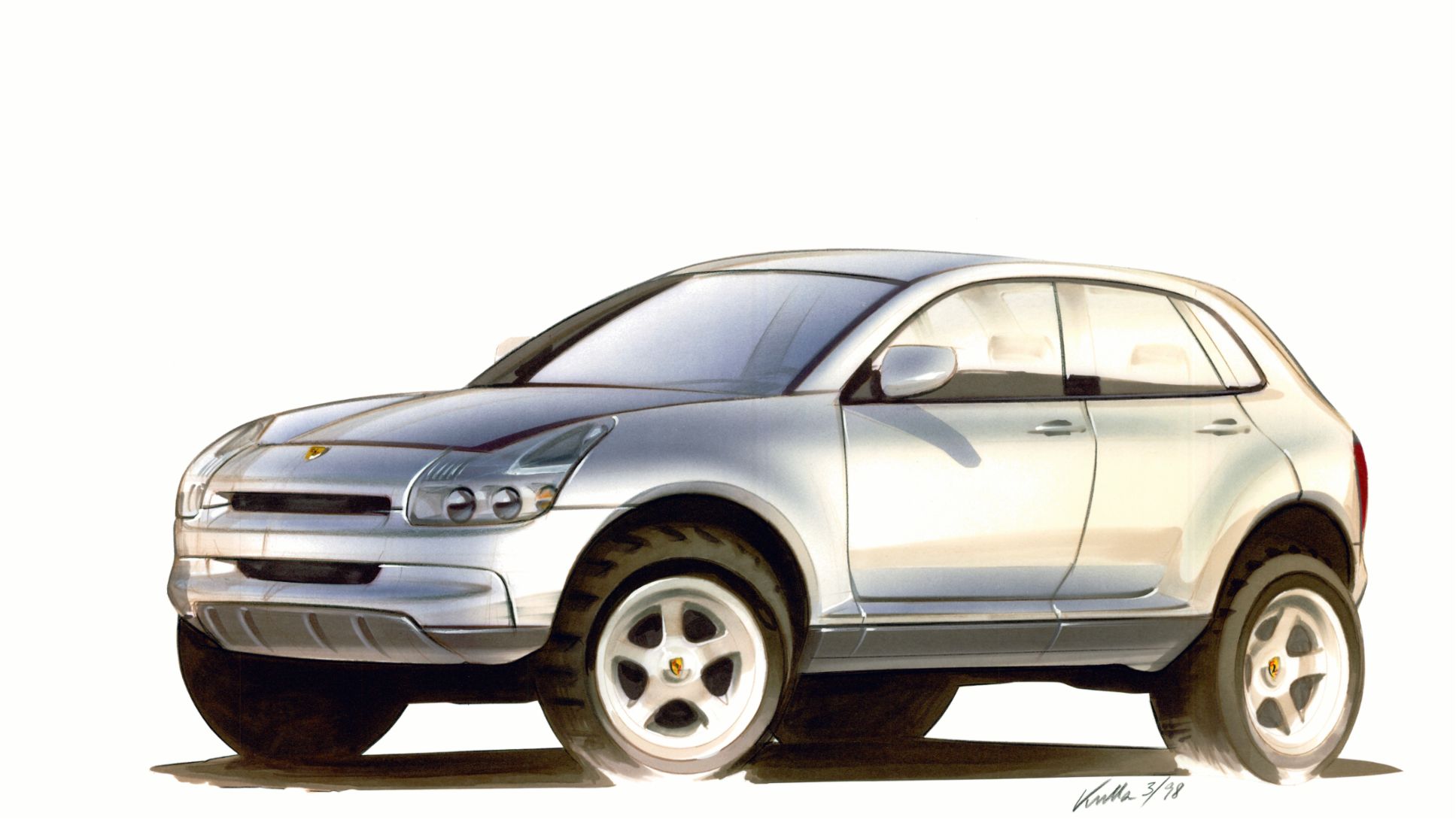
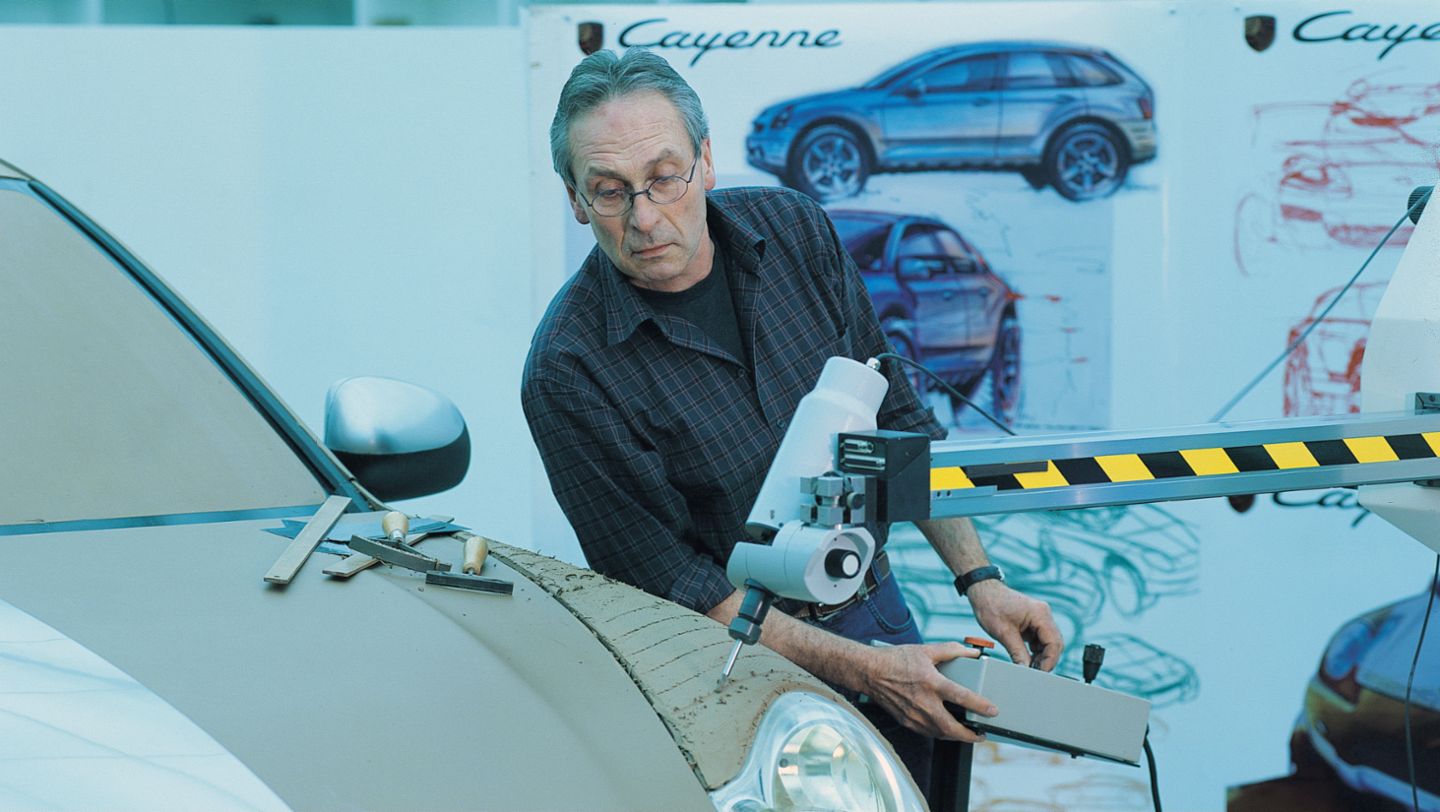
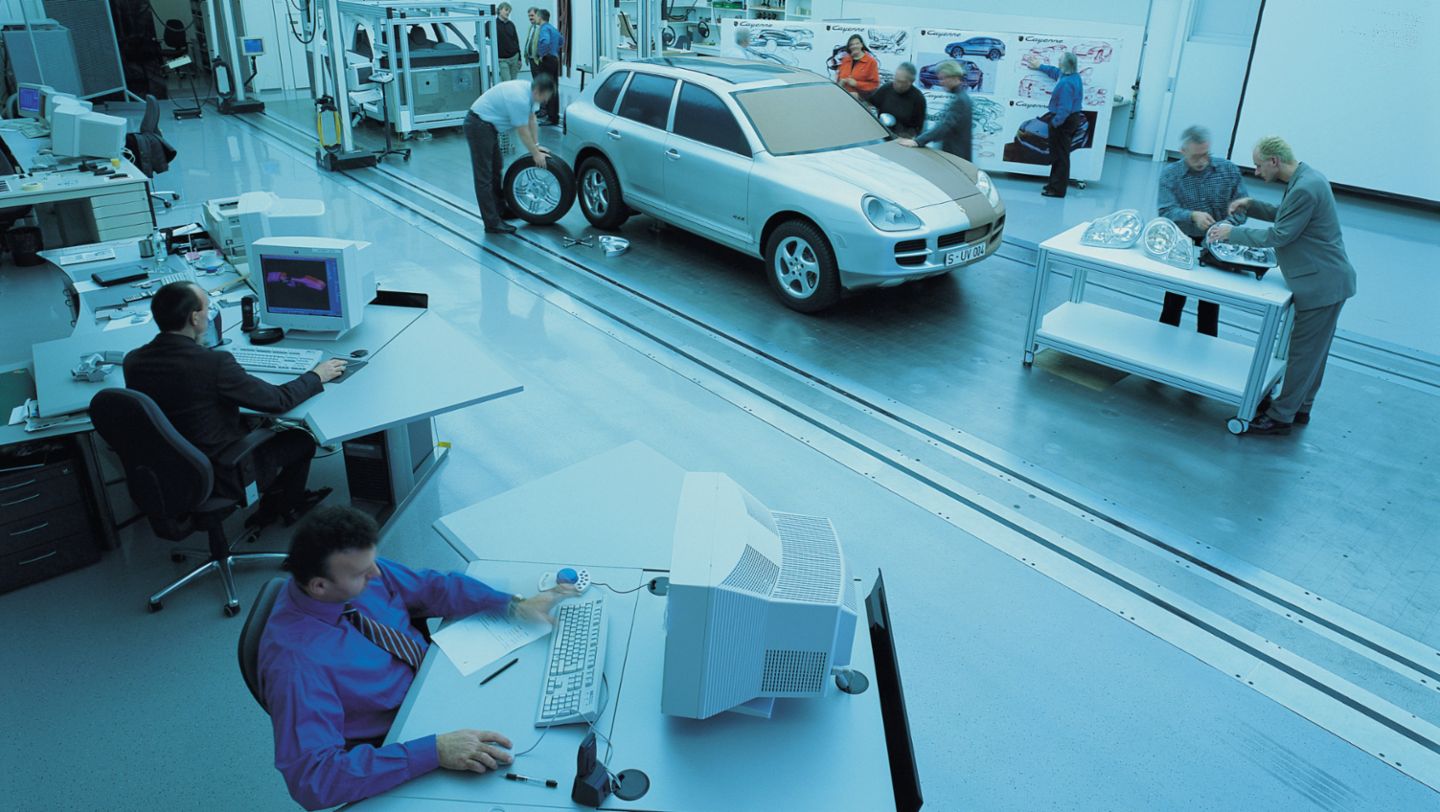
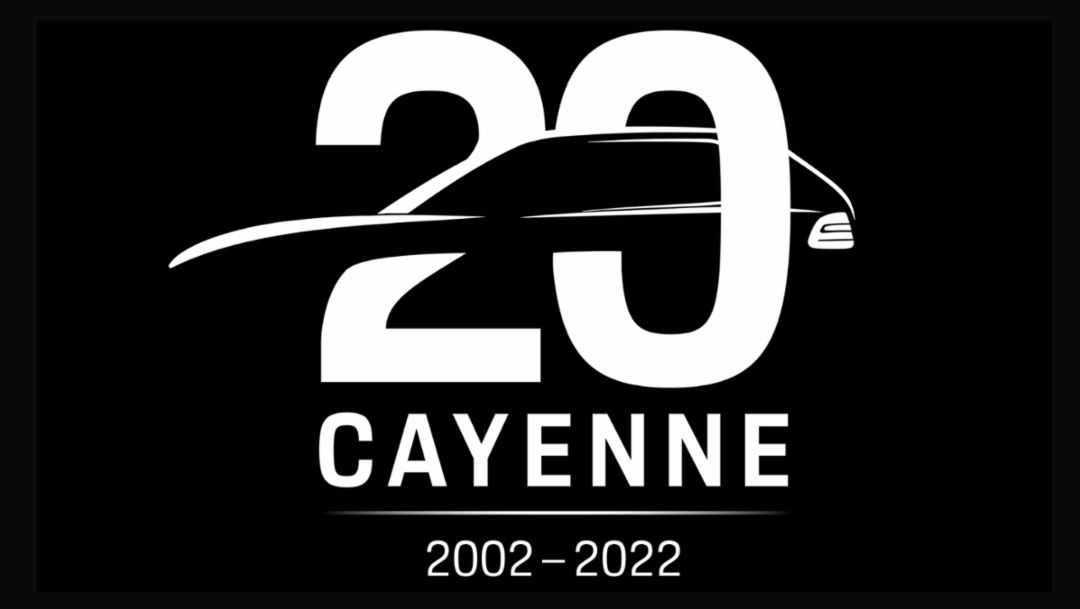
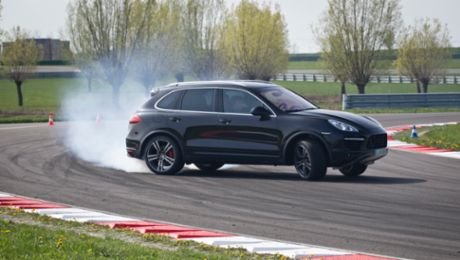
.jpg/jcr:content/04_2022_Werk(3).jpg)
